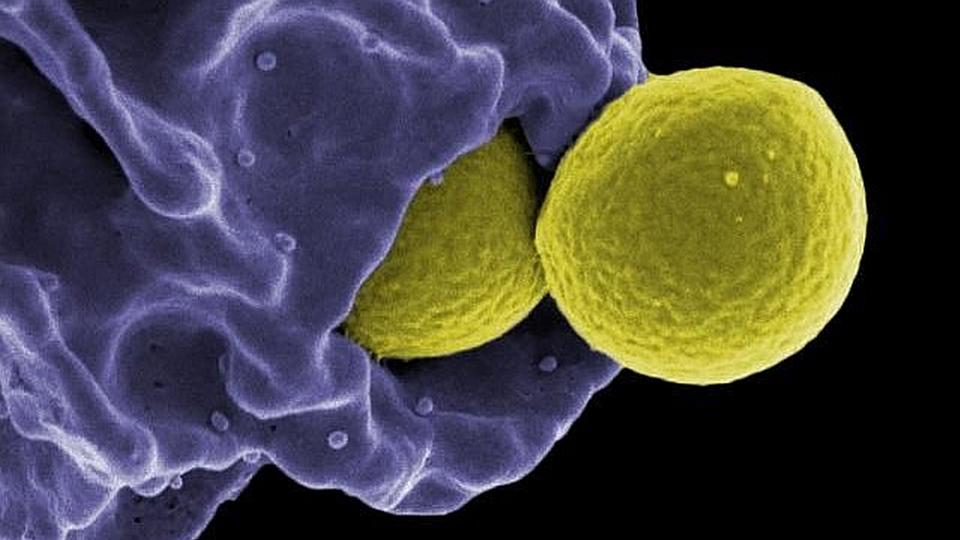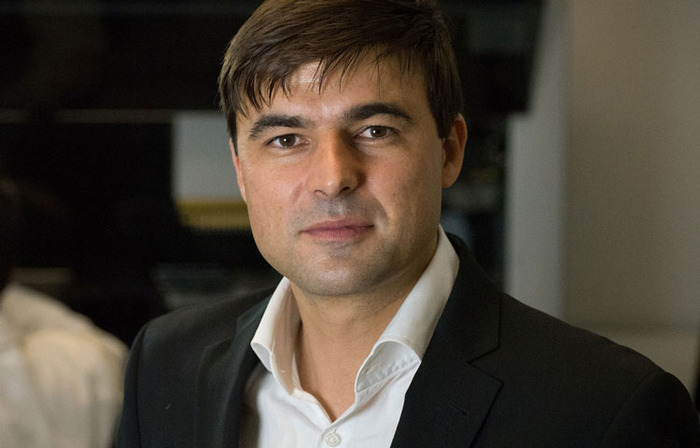
The chemical structure of the new antibiotic was designed by Moses and synthetically assembled by his lab. Dr. Thomas Fallon, Moses’ collaborator at the University of Newcastle, Australia, provided the shape-shifting bullvalene core. Moses says one commenter called the study “probably the ‘coolest’ and most complex natural product derivative paper I’ve come across.”
In the United States alone, drug-resistant bacteria and fungi infect almost 3 million people per year and kill about 35,000. Antibiotics are essential and effective, but in recent years overuse has led to some bacteria developing resistance to them. The infections are so difficult to treat, the World Health Organization deemed antibiotic resistance a top 10 global public health threat.
Now, Professor John E. Moses at Cold Spring Harbor Laboratory (CSHL) has created a new weapon against these drug-resistant superbugs—an antibiotic that can shape-shift by rearranging its atoms.
Moses came up with the idea of shape-shifting antibiotics while observing tanks in military training exercises. With rotating turrets and nimble movements, the tanks could respond quickly to possible threats.
A few years later, Moses learned of a molecule called bullvalene. Bullvalene is a fluxional molecule, meaning its atoms can swap positions. This gives it a changing shape with over a million possible configurations—exactly the fluidity Moses was looking for.
Several bacteria, including MRSA, VRSA, and VRE, have developed resistance to a potent antibiotic called vancomycin, used to treat everything from skin infections to meningitis. Moses thought he could improve the drug’s bacteria-fighting performance by combining it with bullvalene.
He turned to click chemistry, a Nobel Prize–winning class of fast, high-yielding chemical reactions that “click” molecules together reliably. This makes the reactions more efficient for wide-scale use.
“Click chemistry is great,” says Moses, who studied this revolutionary development under two-time Nobel laureate K. Barry Sharpless. “It gives you certainty and the best chance you’ve got of making complex things.”
Using this technique, Moses and his colleagues created a new antibiotic with two vancomycin “warheads” and a fluctuating bullvalene center.
Moses tested the new drug in collaboration with Dr. Tatiana Soares da-Costa (University of Adelaide). The researchers gave the drug to VRE-infected wax moth larvae, which are commonly used to test antibiotics. They found the shape-shifting antibiotic significantly more effective than vancomycin at clearing the deadly infection. Additionally, the bacteria didn’t develop resistance to the new antibiotic.
Researchers can use click chemistry with shape-shifting antibiotics to create a multitude of new drugs, Moses explains. Such weapons against infection may even be key to our species’ survival and evolution.
“If we can invent molecules that mean the difference between life and death,” he says, “that’d be the greatest achievement ever.”
Original Article: New shape-shifting antibiotics could fight deadly infections
More from: Cold Spring Harbor Laboratory | University of Adelaide
The Latest Updates from Bing News
Go deeper with Bing News on:
Shape-shifting antibiotics
- Elanco Animal Health (ELAN) Q1 2024 Earnings Call Transcript
Going forward this year, we expect increased use of our ionophores as the market continues to shift from No Antibiotics Ever programs to no ... We are continuing to help shape the ecosystem for an ...
- Insights into Antibiotic Resistance Through Metagenomic Approaches
which cannot fully recover after repeated antibiotic perturbation, and might cause a shift to a different, but stable community. Our oral and fecal microbiota are distinctly different, both in the ...
- The shape-shifting underwater robot pioneering the depths of the sea
Dive into the world of underwater exploration, and you’ll find a new player making waves: HERO-BLUE. This isn’t your average remotely operated vehicle (ROV); it’s an innovative robot ...
- A disorienting, masterful, shape-shifting novel about multiracial identity
Disorienting as this narrative shape-shifting can be, Khong’s straddling of multiple literary genres insidiously mirrors her focus on hybrid racial and cultural identity. We are all woven ...
- Shape-shifting cancer cell discovery reveals two potential drug targets against skin cancer
The discovery of two genes responsible for sensing the environment and adapting cell shape could offer potential new drug targets to stop cancer from metastasising. Cancer cells can change shape to ...
Go deeper with Bing News on:
Drug-resistant superbugs
- Synthetic Antibiotics Could Improve Treatment of “Superbugs”
Technology Networks spoke to Dr. Ishwar Singh to learn more about the challenges of drug-resistant infections, the discovery of teixobactin and the benefits of synthetic antibodies.
- A mother’s loss launches a global effort to fight antibiotic resistance
Diane Shader Smith's daughter, Mallory Smith, died at age 25 after fighting an antibiotic-resistant lung infection for 12 years. A new book of her daughter's diary entries and a website are aimed at ...
- Scientifically Speaking | The hidden pandemic that could eclipse Covid-19
Antibiotic-resistant superbugs pose a growing threat. This looming crisis demands urgent global attention and innovative solutions.
- Hospital toilets are contaminated with drug resistant 'superbugs'
New study finds high microbial contamination in UK hospital toilets, highlighting need for better cleaning and design changes.
- 'Superbugs' found on floors, ceilings and door handle of hospital toilets
The research also highlighted stark gender differences in bathroom hygiene. Women's bathrooms contained fewer microbes than men's.










